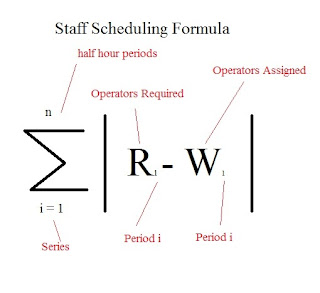We are now in the service economy
and should learn better on how to integrate technology within the e-commerce
world. Considering the explosion in online marketing and service management it
is possible to understand the growth in online service research. Understanding how
customers view the value of such services is important for overall improvement.
Service quality is important for
customers who desire to perceive the value of their purchases worth more than
the effort and cost of buying the product. When this perception of service
quality is high such customers will often reward organizations with higher
levels of loyalty. Research has supported the concept that customer loyalties
are based in this service quality (Gefen, 2002).
New technologies have created the
age of e-commerce. This technology has developed fundamental differences in the
way people interact and conduct business with customers. More importantly, it
also changes the way in which individuals perceive customer value, how they
obtain information, and the very nature of economic exchange.
Customers are not only making
investments in the product but also the company. When a customer spends their
time and resources trying to obtain a product or service they are causing
customer sacrifice (Brandy et. al., 2005). It is this sacrifice that makes its
way into the subjective evaluation of comparative worth.
Through social exchange theory people
can better understand the process of comparative exchanges that both companies
and customers make. Understanding the online goal directed behavior and exchange
of time and effort toward products helps to understand how to provide such services
(Zeithaml, et al. 2002). Doing so will better help organizations align their
services to the customer’s needs thereby adjusting the perception of this
exchange into a more positive one.
A study conducted by Xu,
Benbasat, and Cenfetelli (2011) analyzed service quality, sacrifice, service
outcome, and customer loyalty related to products. Participants helped a friend
shop for a laptop based upon a number of defined criteria. A total of 128 subjects with various
backgrounds were used within the study to provide diversity of perspective. The
researchers desired to define the relationship between online service and
purchases of products.
Results:
-Service quality and customer sacrifice influenced
perceived service outcome.
-The effectiveness of service dimensions
is influenced by the customers’ product knowledge.
-Support for Social Exchange Theory
indicates that if customers feel that their service quality and service
outcomes were beneficial they will reciprocate with future purchases and
loyalty.
-Customer sacrifice (time and effort) is
relative to the quality of the product.
-Customers with high product knowledge
are influenced by lower customer sacrifice versus service quality.
-Websites with live help reduces the
perceive customer sacrifice factor and raises perceptions of positive quality
experience.
Analysis:
As e-commerce grows as a preferred
method of conducting business it is important for organizations to improve
their overall understandings associated with customer relationships. Creating
higher levels of virtual platforms that foster, versus hinder, customer search
preferences can lead to increased sales. In addition, limiting the amount of
customer sacrifice required by offering quick methods of communicating with
representatives can also raise overall satisfaction levels. It is through weighing and balancing the use
of modern technologies that can we create higher levels of positive customer
perception and loyalty.
Author: Dr. Murad Abel
Brady, M., Knight, G.,
Cronin, J. , Tomas, G., Hult, M., & Keillor, B. (2005). Removing the contextual lens: a multinational,
multi-setting comparison of service evaluation models,
Journal of Retailing, 81(3), 215–230.
Gefen, D. (2002). Customer
loyalty in e-commerce. Journal of the Association for Information
Systems, 3(1), 27–51.
Zeithaml, V. A., Parasuraman, A.,
& Malhotra, A. (2002). Service quality delivery through web sites: acritical review of extant
knowledge. Journal of the Academy of Marketing Science, 30(4),
362–375.
Xu, J., Benbasat, I., & Cenfentelli,
R. (2011). The effects of service and customer product knowledge on online
customer loyalty. Journal of the
Association of the Information Systems, 12 (11).


